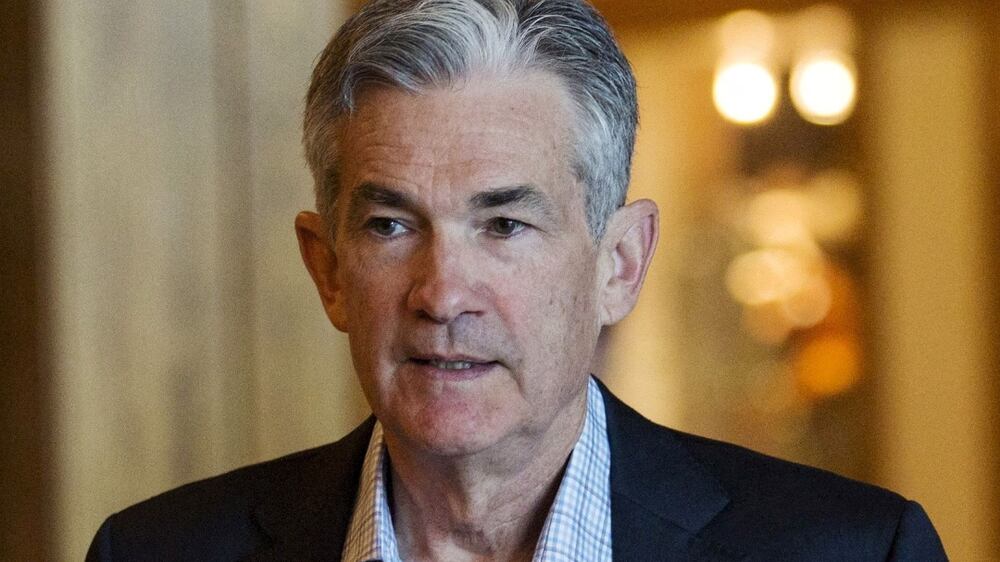After a sharp inflationary increase resulting from the Covid-19 pandemic and the war in Ukraine, central banks have had to raise interest rates. In line with their mandate, they are attempting to slow down the economic cycle to bring inflation back to its target level.
While investors are familiar with the context, the current cycle is unusual because it has emerged after a long period of exceptionally low interest rates, followed by a short period of rapid rate increases.
This swift rise has exposed a whole series of underlying vulnerabilities that are now coming to light.
The recent collapse of some banking institutions in the US and Europe reminds us of the fragility of certain sectors. The continuing contraction of bank lending will weigh on economies, and the prospect of a recession could become a reality over the coming months.
US Federal Reserve chief warns of 'pain' in reducing inflation

Geopolitical insecurity further adds to this fragile financial environment. This all suggests that markets will remain relatively volatile and uncertain for some months.
Although the current market environment naturally leads us to be cautious, the climate transition clearly represents one of the most important opportunities for long-term investors.
Today, powerful forces are at work to encourage and support the climate transition that is now vital: Consumer pressure, regulatory action, the transformation of industrial business models and fair capital allocation by investors.
Government action also plays a part, through public investment programmes and tax credits.
The climate transition will be built around four main axes:
Electrification: Electricity is becoming the dominant energy carrier. From about 20 per cent of global energy demand in 2020, it will account for more than 70 per cent by 2050. To produce electricity, we will need to switch from fossil fuels to renewables (hydroelectric, wind, solar and, certainly, nuclear).
Agriculture and nature conservation: By 2050, we will need to feed two billion extra people while returning large arable areas to reforestation and biodiversity projects. We will need to rethink our production and consumption methods.
Materials: This will involve decoupling the economic growth pathway, which we want to remain strong, from that of commodity extraction. The “take, make, waste” model will need to be replaced by “reduce, reuse, recycle”. Construction materials must be rethought; cars will be shared and their components recycled.
Carbon: The market economy model must expand to include all its externalities. Carbon emissions will become increasingly expensive, creating essential incentive mechanisms for industrial players to adopt genuine transition strategies. In parallel, proven carbon sequestration will open the door to monetary transfers that were inconceivable until recently.
As in the Industrial Revolution of the 19th century or the IT revolution over the past 50 years, these transformations will have a major impact on all our economic systems. Leading companies will emerge stronger, others will disappear.
The solutions exist
Much of the technology needed for these transformations already exists and is currently evolving into mass market solutions. We are on the verge of an exponential acceleration of these industrial solutions that should release unprecedented growth opportunities.
Several factors are driving this acceleration.
First, the fall in production costs: In the renewable energy field, costs have plummeted by 60 per cent to 90 per cent over the past 10 years.
Next, constant improvements in performance: Electric vehicles are reaching an energy efficiency of about 80 per cent, compared with 20 per cent for conventional vehicles.
Finally, massive support from public bodies, to the tune of hundreds of billions of francs for the three major blocs of Europe, the US and China, are helping to speed up investment and work on large-scale industrial solutions — in the field of heat pumps, electric vehicles and construction materials, for example.
The war in Ukraine is another accelerating factor, yielding a renewed conviction in Europe regarding the importance of true energy independence.
Aligning portfolios with the current transition
To benefit from investment opportunities linked to the climate transition, it is vital that we understand its nature and trajectories. This requires fundamental research. It is necessary to analyse the maturity level, returns and growth potential of the different types of technology and to model their development.
The challenge is to be able to anticipate the nature of major impending changes that will, no doubt, shake up many economic sectors and give rise to new business models.
It is useful to follow the investments made by companies, which often point to future sources of profitability.
The energy transition alone is expected to account for about $4,244 billion in global annual investment over the next 10 years.
This figure is comparable to the capital expenditure of the information technology sector, which now represents about 20 per cent of total returns of global companies, compared to only 5 per cent in the 1990s.
Reflecting what happened in this field, we must prepare for the emergence of the new Gafas (Google, Apple, Facebook and Amazon) of tomorrow.
The climate transition is no longer a mere theory. It is no longer a distant project. We are firmly convinced that this transition has now begun. It is in motion. In many respects, it is accelerating.
Investors must ask themselves: Do we want to ignore it or, on the contrary, should we systematically integrate it into our portfolios?
Frederic Rochat is managing partner at Lombard Odier






